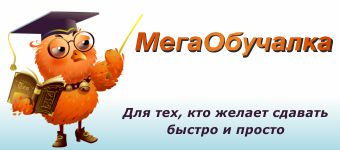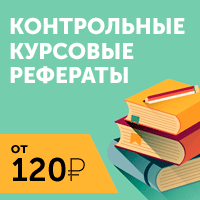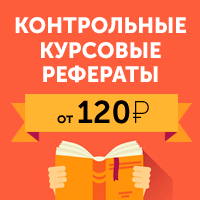 |
Главная |
Interaction between teacher and students
|
из
5.00
|
The teacher is no longer the only source of information about the language, nor is s/he the sole provider of texts and exposure to target language materials. S/he will need to apply (new found) skills to guiding learners through the labyrinths and excesses of the information society to a principled approach to learning which can be appropriated by learners to help them on the path to self-determined acquisition of language skills and knowledge. The most successful teacher in an ICT rich environment is a good learner (Roblyer, 2003)
The learner is no longer regarded as a receptacle into which the teacher pours wisdom and knowledge, but as an agent of change, reacting and interacting with the mass of materials that s/he encounters. The classroom situation begins to reflect that encountered in modern companies, which have adopted flat, non-hierarchical structures where maximum benefit for all is to be reaped by pooling knowledge and resources in informal exchanges.
New media and the culture of learning
Different cultures also show different strategies for learning. For instance, in Middle East, the culture of learning is more that of memorization and repetition while as for western people it is more that of inference and critical thinking. The new media not only facilitate a changed culture of learning in institutional contexts, they also demand such changes. They provide new opportunities and challenges by:
• offering a wider range of teaching contents (especially teaching methods);
• enabling more self-directed learning, offering a range of choices, individual learning pathways and freer forms of learning;
• offering teachers and learners the chance to plan and organize courses together (empowering learners to influence the choice of teaching contents);
• freeing learning and teaching from the limitations and constraints of the traditional classroom by opening up and using spaces outside the school/ teaching institution;
• facilitating communication between learners and between learners and the teacher via the Internet
Reading
Generally, reading skill in a language classroom is considered to be very important, because without this knowledge, students are not likely to be successful in the typical language class especially in EFL situations. Conceptions of reading have undergone different changes over time from the belief that reading is a passive skill to the idea that reading is psycholinguistic decoding of letters and words, demanding skimming, scanning, and guessing words from contexts (Chastain, 1988). Reading from the screen is less a passive act of decoding a message from a single authoritative author and more a self-conscious act of creating knowledge from a variety of sources (Landow, 1992).
If we consider reading a social practice that happens in particular sociocultural contexts (Gee, 1996) then in this information era which is dominated by English language and majority of people in the world to some extent are familiar with the ABC of reading, teachers of English language are expected to go beyond the mechanistic view of reading, familiarizing students with the strategies to tackle the problems they encounter while they are surfing the net.
In light of the Internet, readers encounter different relevant or irrelevant articles and books, different people from different walks of life, and different pieces of reliable and unreliable news, which demand new skills to analyze them, and as Warschauer (2000) stated, readers should be equipped with the following skills:
– Finding the information to read in the first place (through Internet searches, etc);
– Rapidly evaluating the source, credibility, and timelines of information once it has been located;
– Rapidly making navigational decisions as to whether to read the current page of information, pursue links internal or external to the page, or revert back to further searching;
– Making on-the-spot decisions about ways to save or catalogue part of the information on the page or the complete page;
– Organizing and keeping track of electronic information that has been saved.
These may seem like esoteric skills for a class of beginning English learners who are still trying to figure out how to decode simple words. But as English expands in the 21st century as a language of international communication, the number of learners who master basic English skills will grow.
Increasing number of learners throughout the world will find themselves in the situation of secondary students in many European countries today, where the challenge is not so much to achieve basic decoding skills but rather to use English for the types of complex global communication discussed earlier in this article.
None of these types of skills are completely new of course. The need for critical, active, and interpretive reading has been an important part of print literacy as well. Moreover, the vast amount of information available on the Internet and its hypertextual organization speed up changes in the nature of reading which were already occurring in the age of print, and make these kinds of critical reading skills all the more essential.
To be equipped with these skills doesn’t mean that while you are reading from pages you don’t need to be equipped with these skills, but it means while reading from screen, these abilities are more essential.
By the way, while reading from the screen you need to be familiar with different skills, because it may have audio, video, and icons. And only a multiliterate person can deal with these issues and be successful.
Writing
Throughout human history, speech has been used for interaction and writing for its permanence, used for interpretation and reflection (Harnad, 1991).Writing, unlike speech, can be accessed and analyzed again and again by a limitless number of people at different times. It is for this reason that the development of writing and later print is viewed as having fostered revolutions in the production of knowledge and cognition. What is of critical importance in education is the intersection between interaction (speech) and reflection (writing) and this is the Internet that paved the way for this intersection.
For the first time in history, human interaction takes place in a text-based form, and there is no longer any divide between speech and writing, writing equals speaking, meaning that, while you are writing in fact, you are speaking, of course with two important differences with the normal conversation.
First of all, the written, computer-mediated mode of the discourse facilitates a special relationship between interaction and reflection, because you can freeze any frame you want and focus on it. This creates an excellent environment for a group of people to construct knowledge together by expressing themselves in print and then assessing, evaluating, and reflecting on their own views and those of others.
A second difference is that the social dynamics of computer-mediated discussion have proven to be different from face-to-face discussion in relation to issues such as turn-taking, interruption, balance, equality, consensus, and decision-making (Warschauer,1999). That is why, Harnad (1991) described the Internet as bringing about “the fourth revolution in the means of production of knowledge”, on a par with the “three prior revolutions in the evolution of human communication and cognition: language, writing, and printing”.
Paper and pencil writing is a slow and clumsy way of exchanging ideas but on the net, the synchronous communication allows students to take part in discussion groups and online chats to express themselves. Therefore, if writing is the equivalent of speaking on the net; therefore, students are needed to be familiar with lots of skills to communicate effectively and quickly.
Moreover, the Internet is a good place for the projection of identities. Writing for the Web has emerged more recently. Studies by Lam (2000) and Warschauer (1999) have shown the central role of identity in Web-based writing; due to its highly public and multimodal nature, the Web is an ideal writing medium for students to explore and develop their evolving relationship to their community, culture, and world. This can contribute to a sense of agency, as learners take public action through their writing ( Kramsch, & Lam, 2000; Warschauer, 2000). Authenticity of purpose is critical, with students’ souring on Web-based writing that has no real-world objective.
As summarized by Warschauer (2000), high student engagement in writing for the Web depends on students’ understanding well the purpose of the activity, viewing the purpose as socially and/or culturally relevant, finding the electronic medium advantageous for fulfilling the purpose, and being encouraged and enabled to use medium appropriate rhetorical features to fulfill the purpose.
A Chinese student from Malaysia uses the modal ‘‘can able to’’ – a structure that connotes for her ‘‘ability from the perspective of the external circumstances’’(Lu, 1994). Though the student is aware of the modal can, she finds that this is loaded with a volitionist connotation that is more typical of a western sense of unlimited agency. The student wants to express the need to achieve independence despite community constraints (as it is true of her personal experience of coming to study in the United States despite the family’s view that the place of a woman is inside the house). Her neologism is an attempt to convey a more qualified agency that takes account of community restrictions. Finding that even grammar can be ideological, Lu asks whether we shouldn’t go to the extent of accommodating creative uses of language in our practice of multiculturalism in education.
Closely related to the issue of identity is that of voice. A study by Matsuda (2001) indicated the complex nature of voice in online writing, showing how a Japanese Web-based diarist drew from a wide range of discourse practices – used by video game players, animation fans, and others – in shaping and expressing her online voice. This complexity could present a particular challenge for language learners, whose range of available discursive repertoires in their second language is often limited.
Therefore, the concept of authorship is hanging in new media, with students empowered not only to author texts but also to help rewrite the very rules by which texts are created. They can impose all of their levels of authorship on the outside world through online publishing (Murray, 1997).
These new possibilities thus shift the emphasis from authenticity (following native speaker norms, to a later emphasis on authorship (creating texts within structural environments), to new opportunities for agency (Warschauer, 2000). In fact the ability to author texts, together with the authenticity of audience in online communication, creates new possibilities of agency, that is the power to take meaningful action and see the results of one’s own decisions and choices.
In sum, the Internet is rapidly shifting the terrain of writing. Before the Information revolution, writing was viewed as a mechanical correctness and grammaticality, and sometimes a little emphasis put on argumentation, persuasion, and justification skills in English classes.
Writing was treated as an orphan child and escaped teachers’ notices. To project your identities, to introduce your own culture, to make friends, to write and publish articles, to develop web sites, to land a suitable job, to join a discussion group, and to publicize your products, you need to know more than basic and mechanistic level of writing. New situations require that students know how to argue, justify, persuade, and communicate effectively. So grammaticality plays second fiddle to the critical writing.
Conclusion
As it has been stated, the new era of cybercommunication, cybervillage, and globalization requires multiliteracies which have opened up a new paradigm for second language learning especially reading and writing instruction in the academy. The pedagogical implications and classroom applications have to be worked out in the future. Generally, English classes are just sites of language learning and no more than that. Activities, tasks, exercises are usually arranged in a way to make students highly proficient in English language. However, the new era demands more than that: critical thinking and interpretation are a must of this age. To engage in the creative and critical process of reading and writing, we have to stop focusing on the basic levels of reading and writing skills. We have to teach our students strategies for critical evaluation and rhetorical negotiation so that they can express their views easily and read and evaluate materials critically.
In a nutshell, language activities must empower learners to take control, to become autonomous, and to become better thinkers and language learners. To this end, second language learning teachers are required to adopt an extensive view towards language learning, transcending the traditional ways of teaching. They are expected to teach both language and thinking. Learners are then engaged in using the target language for a purpose, that is, to develop learners’ thinking ability, and through this that their language competence develops.
Instruction:This is an adaptation of Kendra Cherry’s recommendations for graduate students and young researchers, published in the Internet without copyright limitations. You are sure to realize that a graduate student’s activity starts with collecting special information and critically reviewing scholarly papers in his or her field. You will have to acquire the standard guidelines along which any critique is written. This will be one of your objectives in the process of writing your graduation paper.
Most graduate students are expected to realize that critiquing a professional paper is a great way to learn more about your field of research, and the research process itself. Students can analyze how researchers conduct experiments, interpret results, and discuss the impact of the results. In this Unit your assignment is to prepare a critique of the article by Ghasem Modarresi et al. “New Ways of Teaching English as an international Lingua Franca”.
|
из
5.00
|
Обсуждение в статье: Interaction between teacher and students |
|
Обсуждений еще не было, будьте первым... ↓↓↓ |

Почему 1285321 студент выбрали МегаОбучалку...
Система поиска информации
Мобильная версия сайта
Удобная навигация
Нет шокирующей рекламы

